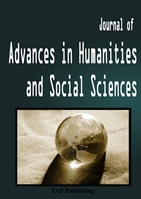
|
Published online: 2019
Abstract
This paper discusses the important role of social capital, networks, and community engagement in disaster recovery. This study takes the case of Nepal and analyzes the recovery and reconstruction activities done through direct initiative and active engagement of residents in Giranchaur village of Sindhupalchowk district after the devastating earthquake of 2015. Information was gathered based on primary data sources collected through field visits and analysis of secondary data. Two field visits were carried out in October 2017 and August 2018, respectively during which, direct observation and in-depth interviews were carried out with key informants and residents of Giranchaur. Available scholarly literature on the topic was reviewed, and two main policy documents were prepared in Nepal to guide the reconstruction and recovery process. The finding of this study shows that idea generated from the grassroots, lead by an able local leadership and implemented via existing social networks with active community engagement leads to sustainable recovery, as shown by the case study of Giranchaur village. Based on the evidence, the paper derives some lessons from experience in the aftermath of the Nepal Earthquake 2015 that have practical implications to policymakers when deciding future intervention strategies in disaster-affected communities. |